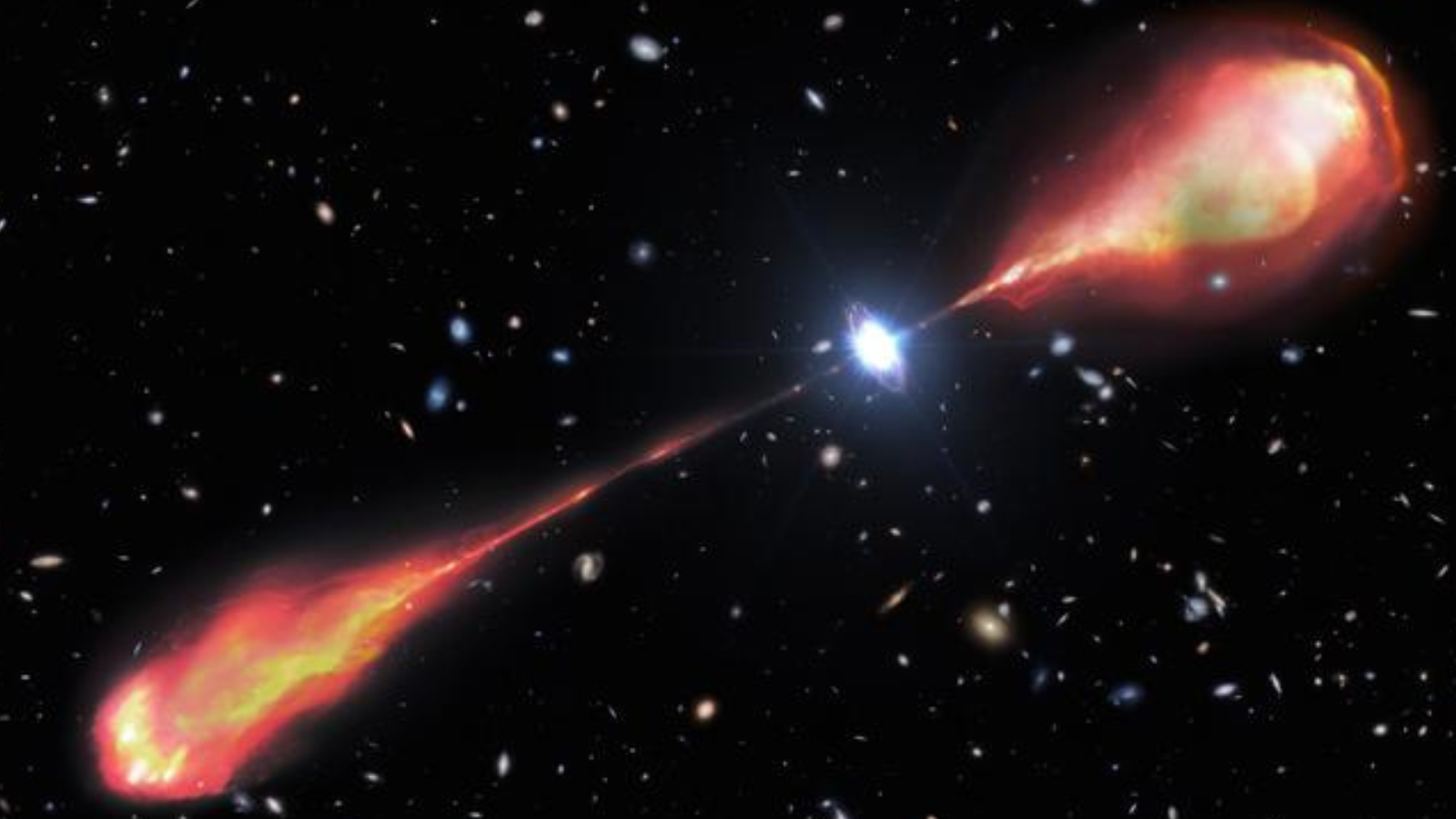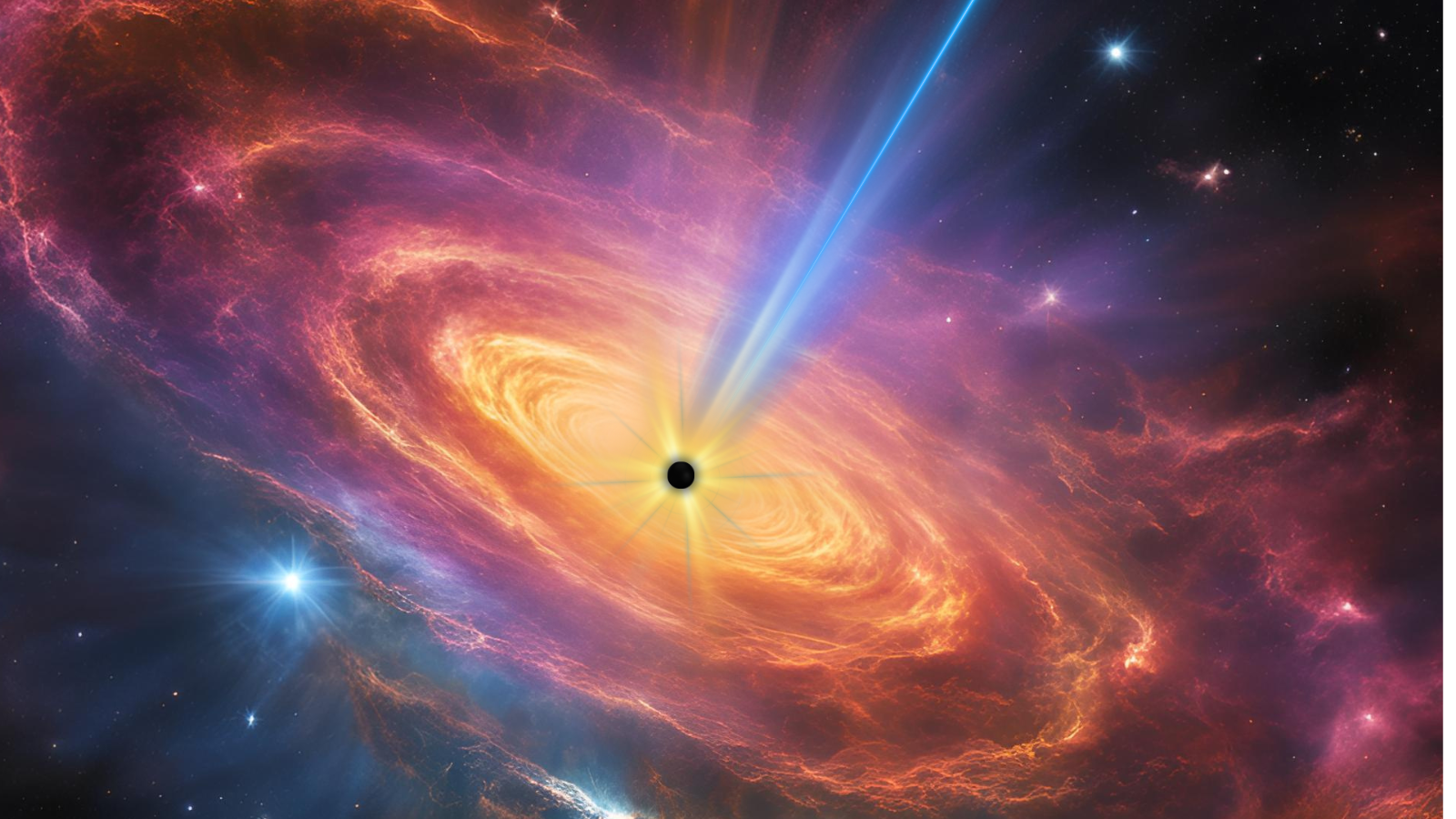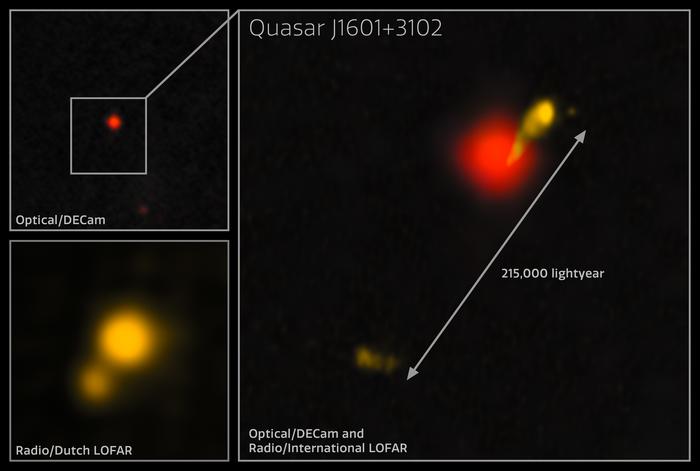Scientists discover largest black hole jet ever seen in the early universe — its twice as long as our galaxy
Astronomers have discovered the largest black hole-launched jet ever observed in the early universe.
Milky Way.
As dark matter has mass but does not emit, absorb, or reflect any electromagnetic radiation, scientists have not been able to directly observe it.

Notably, the quasar powering this massive radio jet doesn't have an unusually large black hole mass when compared to other quasars," Anniek Gloudemans, team leader and researcher at NOIRLab, said in a statement. "It appears that you don't necessarily require an exceptionally large black hole or high accretion rate to create such strong jets in the early universe.
However, there is no text provided. Please provide the text you'd like me to paraphrase in the United Kingdom English language, and I'll be happy to assist you.
quasars.
The mass of the supermassive black hole around is incredibly large, resulting in tidal forces and immense friction in the accretion disk which becomes superheated and emits a brilliant glow.
These particles are propelled by vast magnetic fields. They are speeded up almost to the speed of light and shot out from both ends as highly precise twin beams.
It was less than a tenth of its current age.

The LOFAR radio telescope array, a network of radio telescopes distributed across Europe.
(The Granite Mountain Advanced Observatory for Optical Research bore in on it in infrared, while the Hobby Eberly Telescope aimed to observe it in visible light.
We were searching for quasars with strong radio jets in the early universe, which helps us understand how and when the first jets come into being and how they affect the development of galaxies," Gloudemans mentioned. "The reason we can see it from Earth at all is because this object is so extreme, despite being a vast distance away.
This object displays the possibilities of what we can achieve by merging the capabilities of multiple telescopes which operate across various wavelengths.

One main goal of these follow-up observations was to figure out the characteristics of this quasar and the extremely large black hole that drives it.
So far, the team have been able to calculate that the black hole has a mass of 450 million suns, but they also hope to find out how quickly it is consuming, or accreting, matter.
affects its jets.
When we took a closer look at this object, we anticipated the southern jet to be just a distant nearby emanation and for most of it to be relatively minor. It was somewhat astonishing when the LOFAR image showed large, detailed radio structures, however," said Durham University's Frits Sweijen. "The properties of this far-off source make it challenging to find at higher radio frequencies, showcasing the capabilities of LOFAR in isolation and when used in conjunction with other instruments.
The Astrophysical Journal Letters.
Posting Komentar